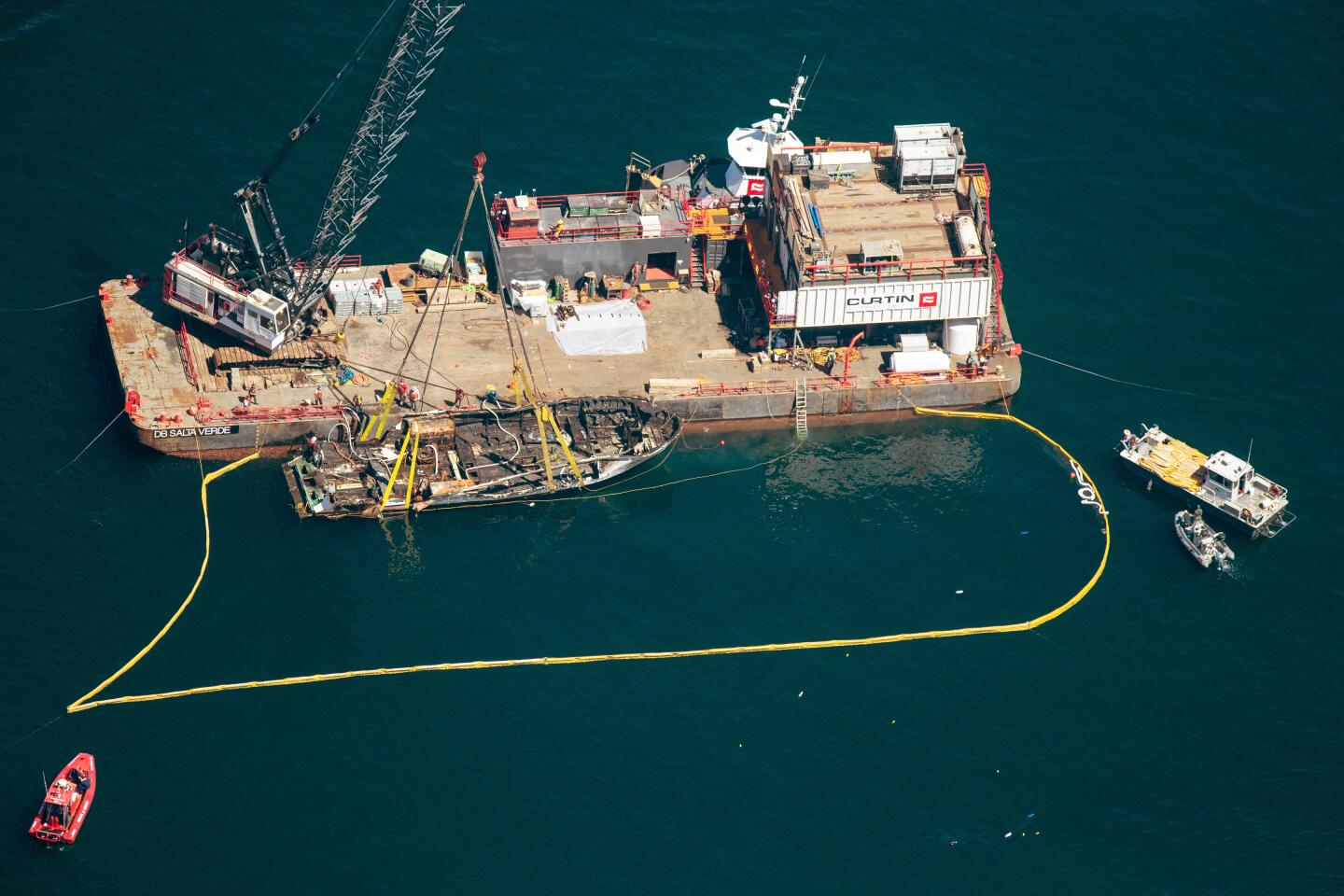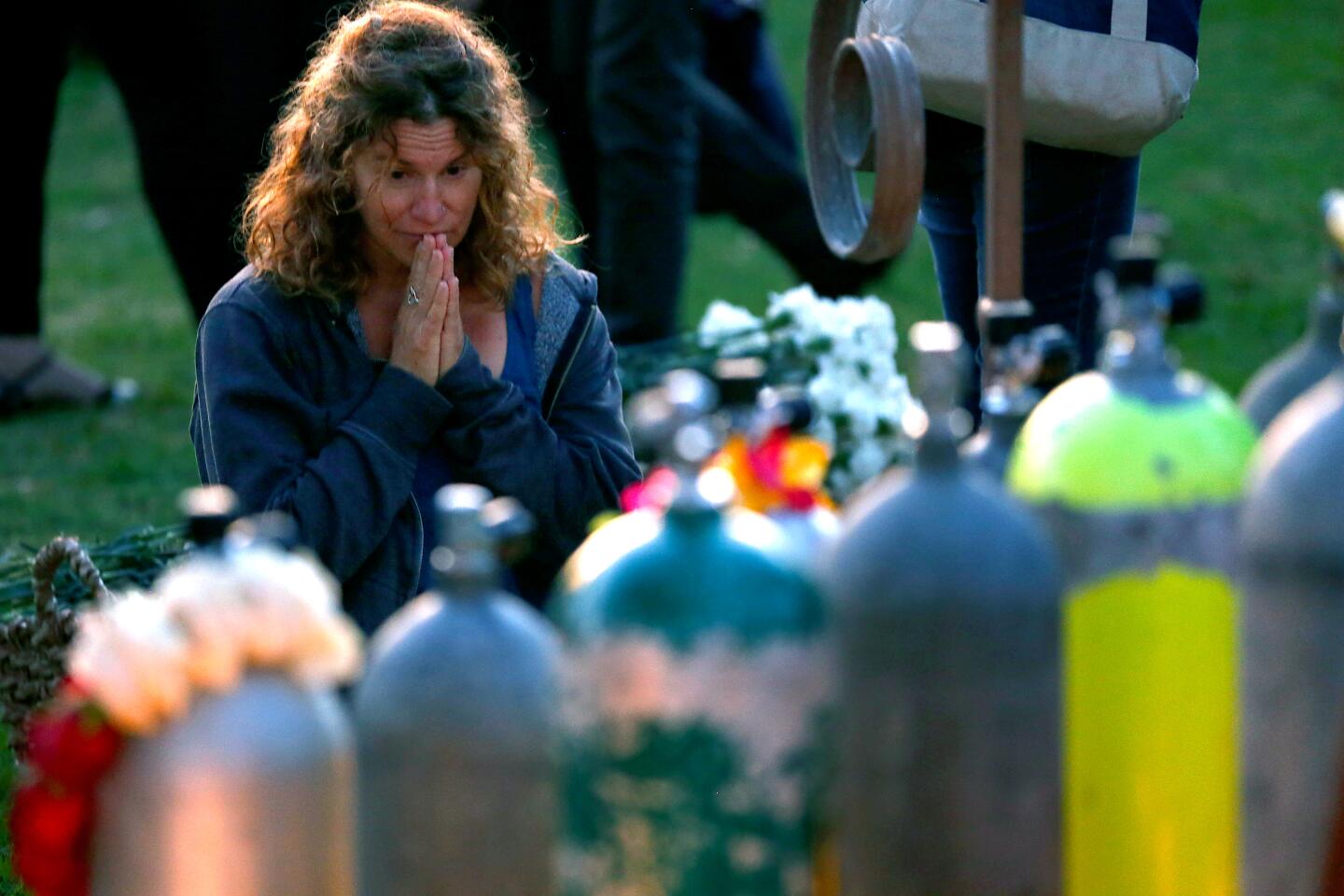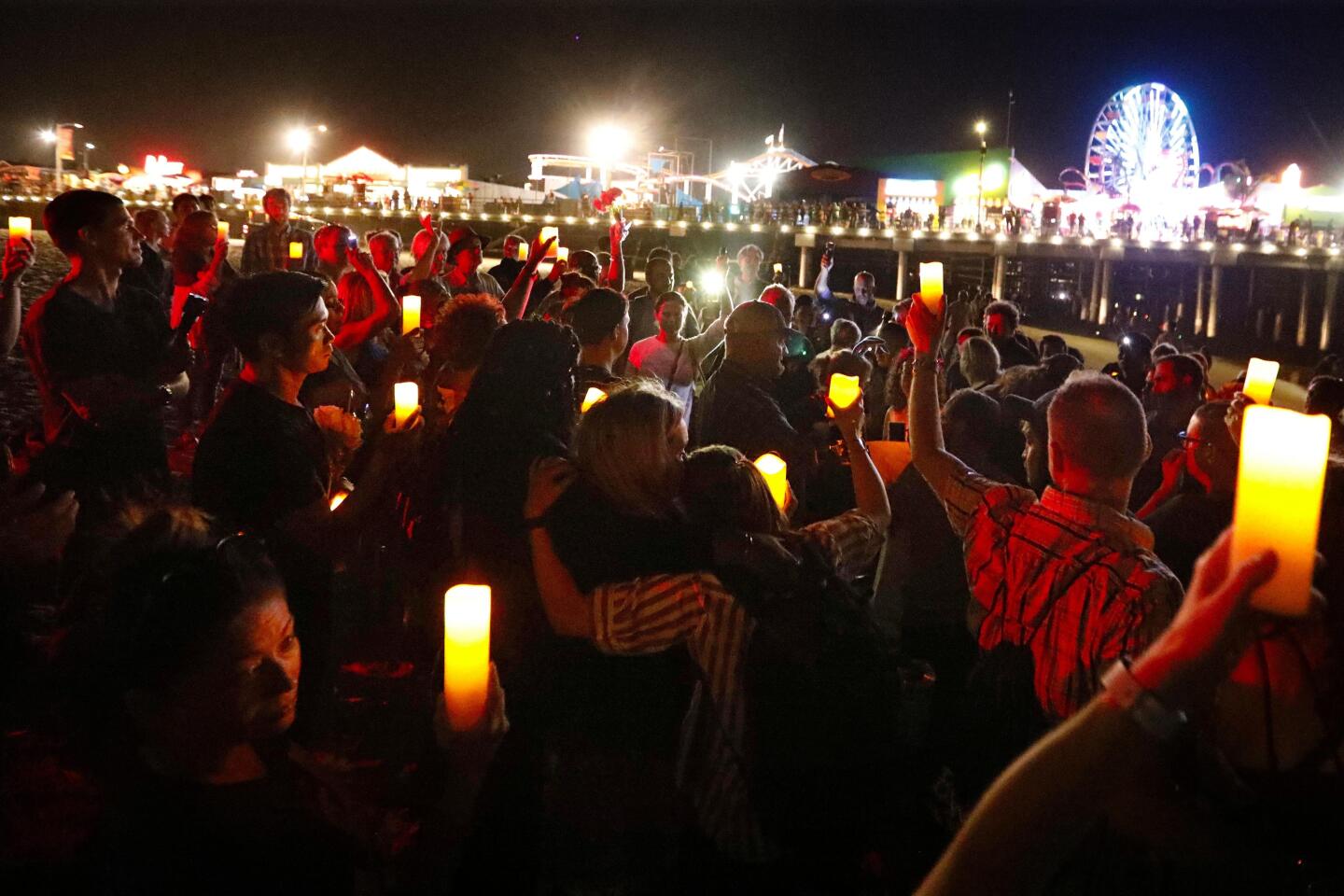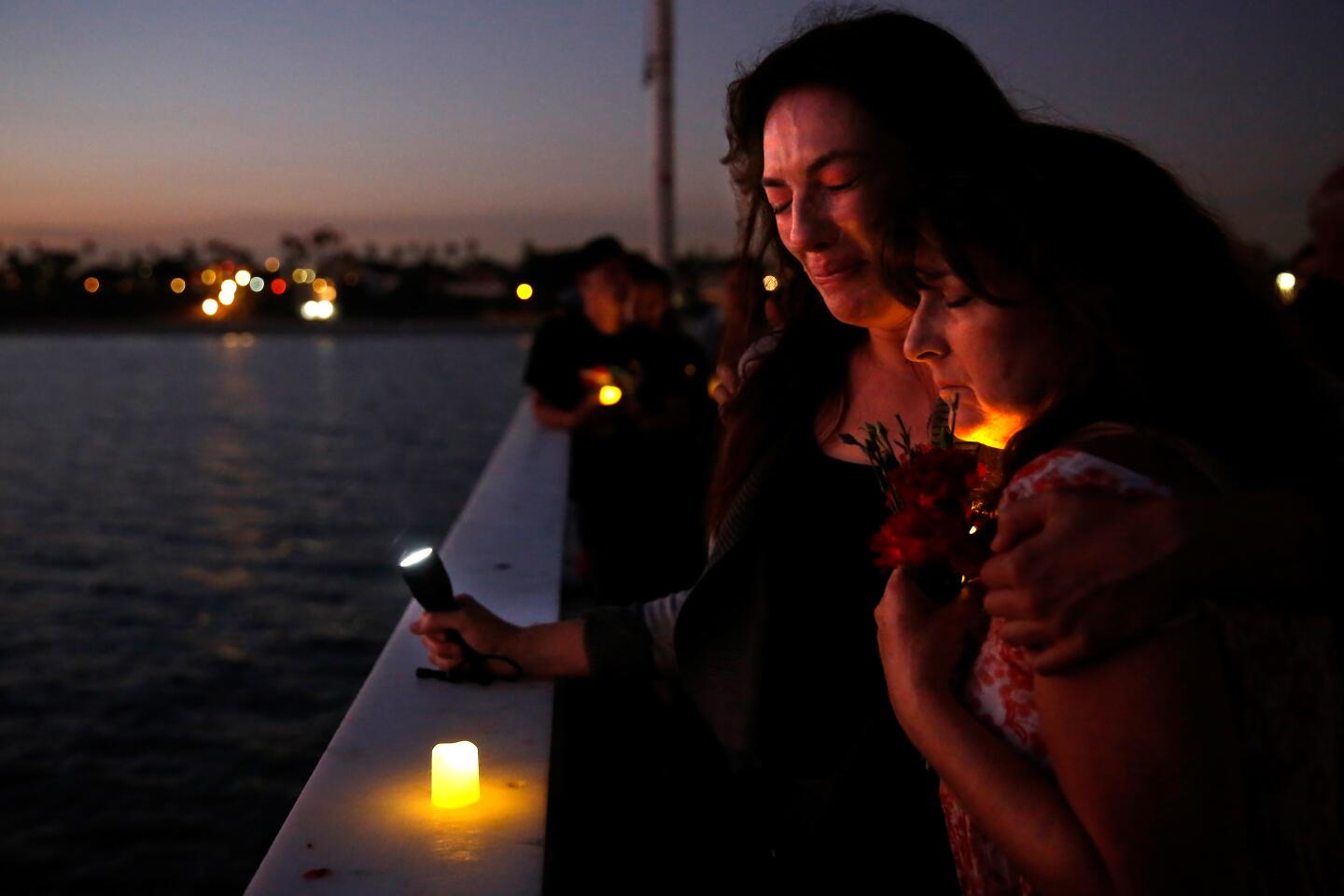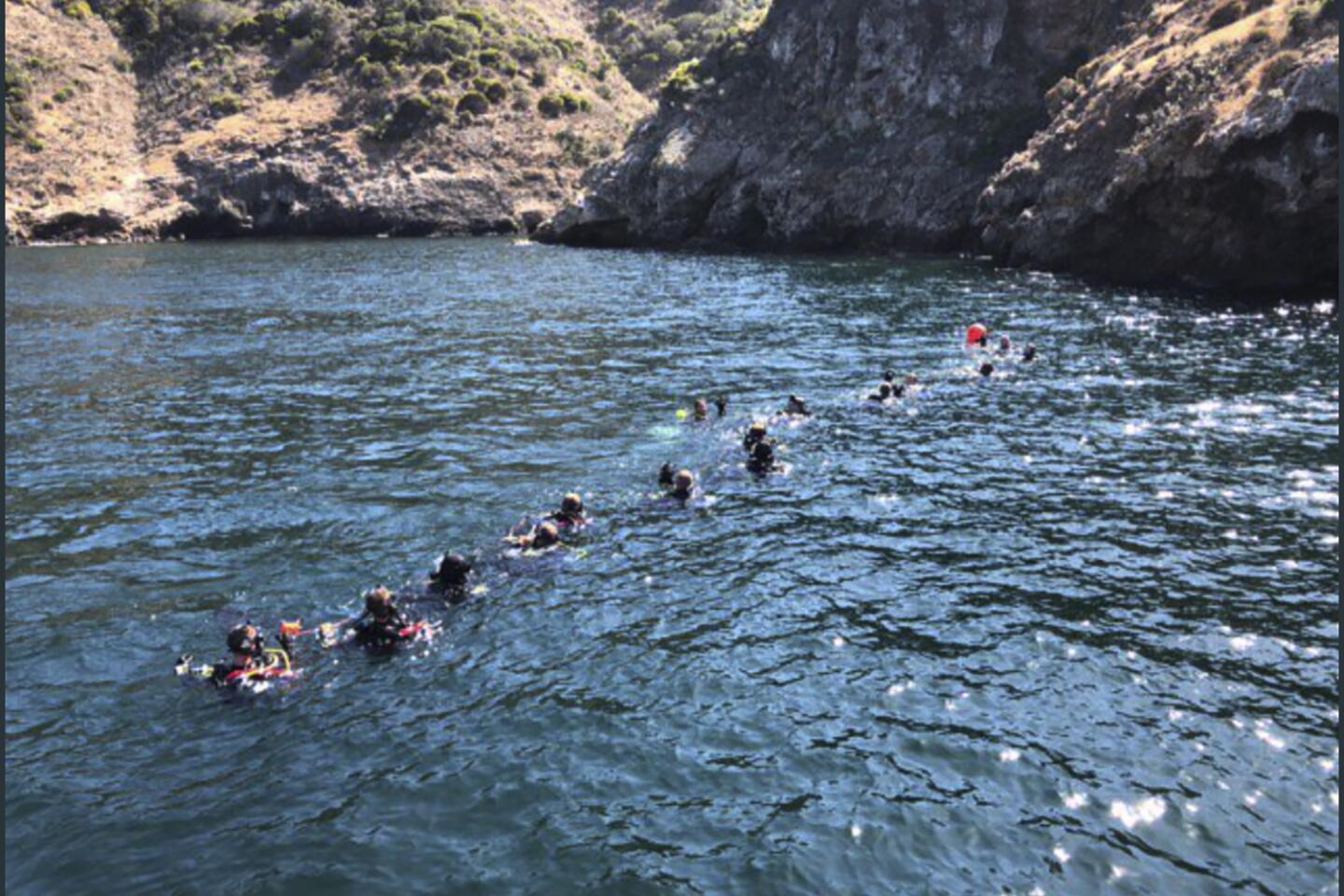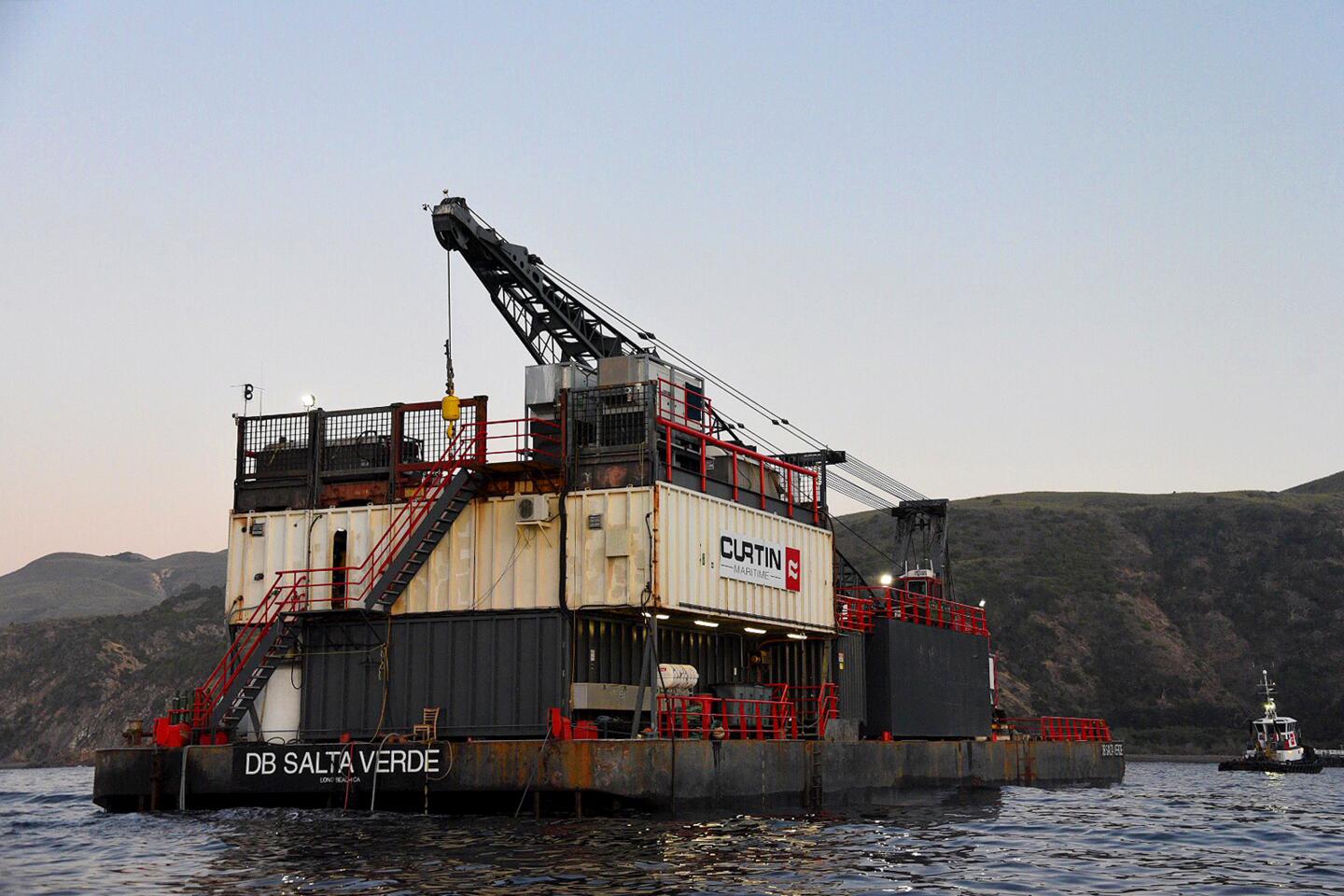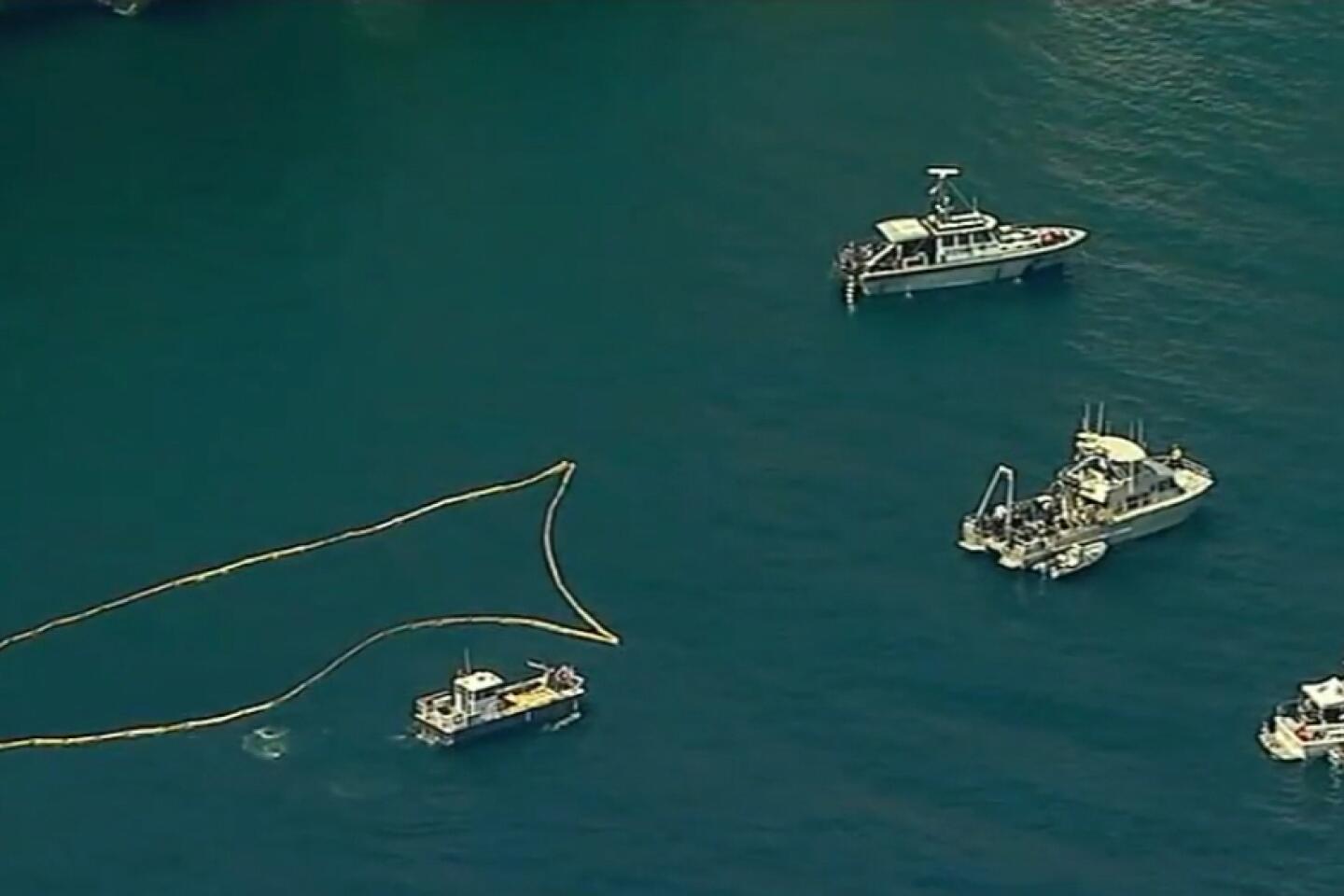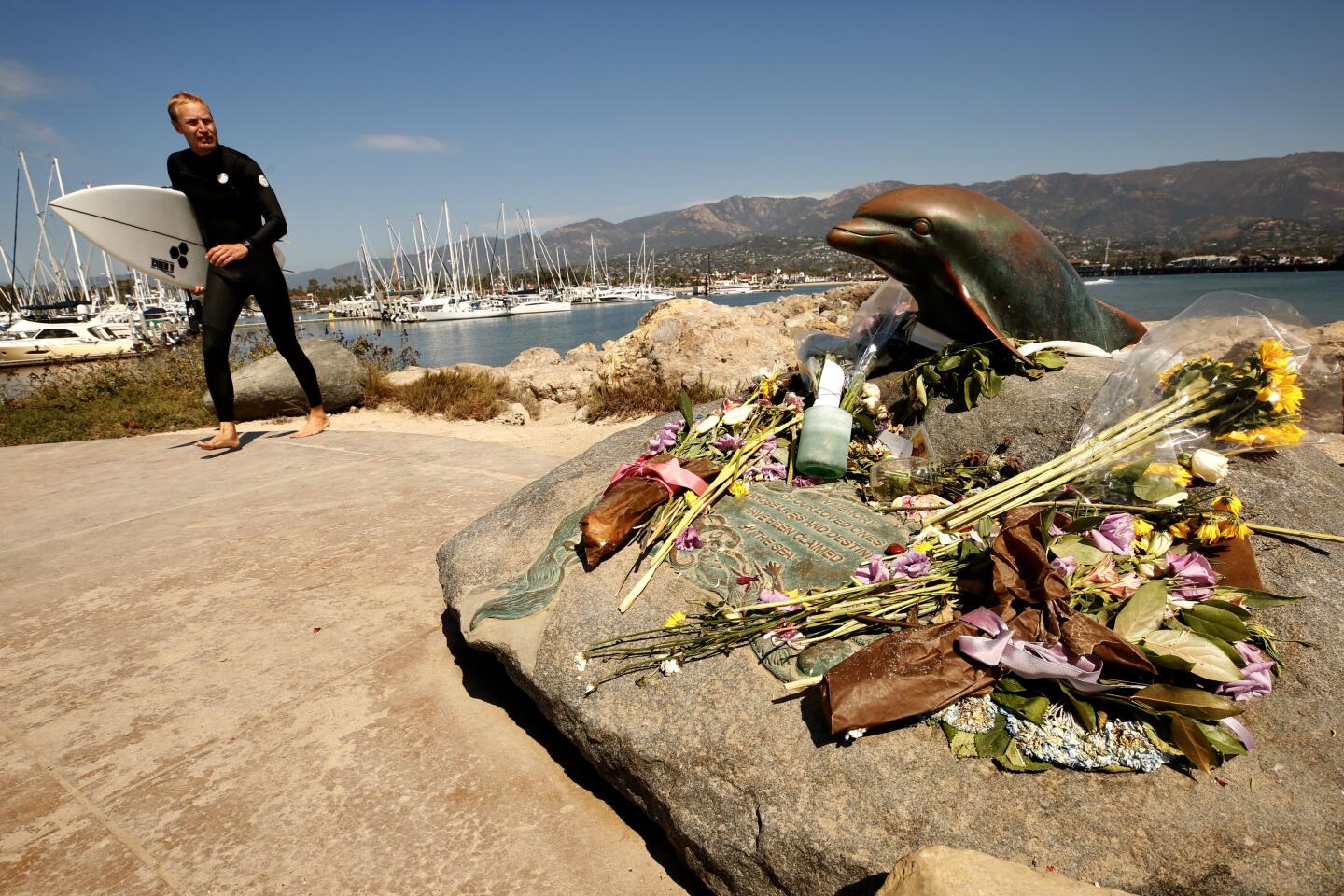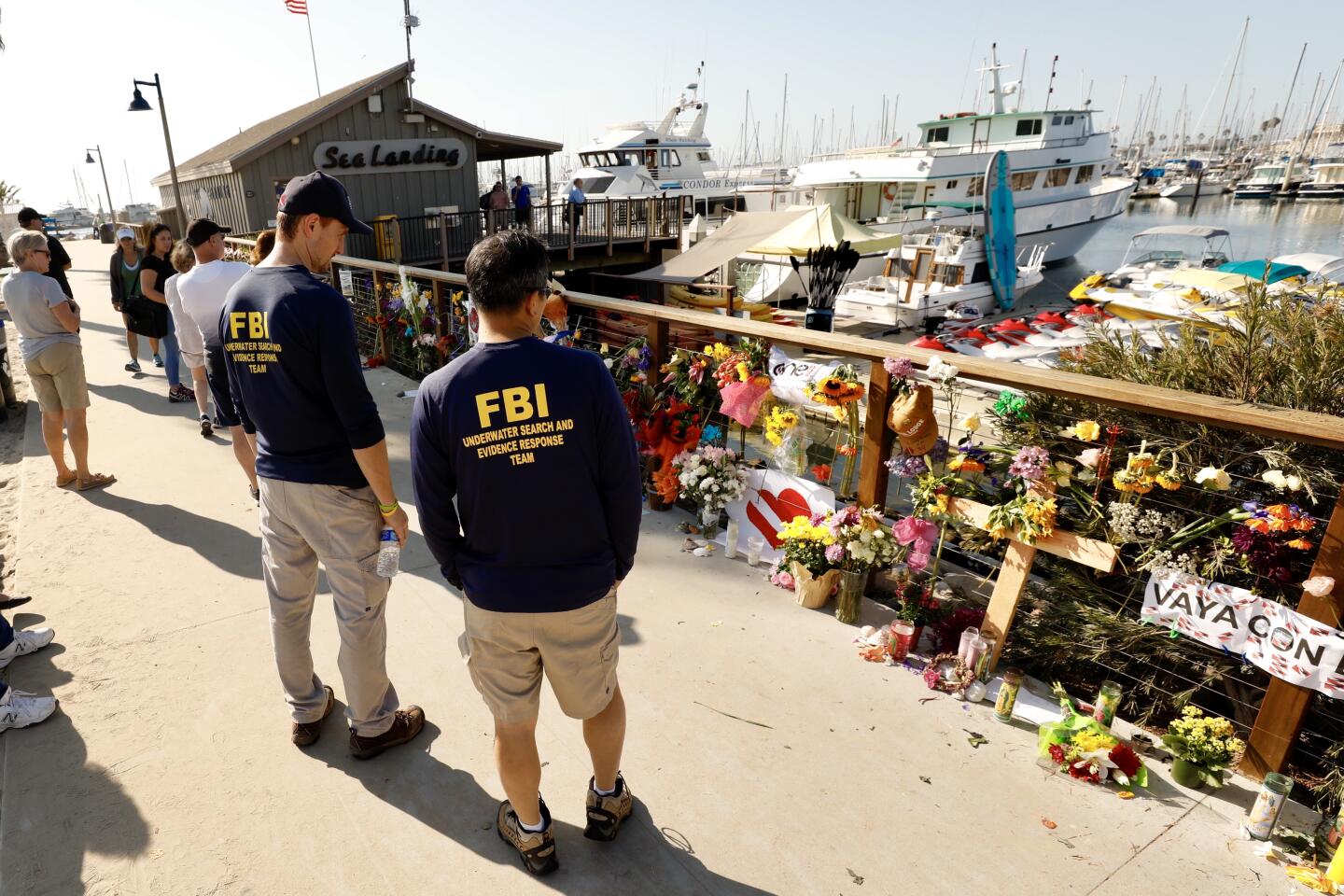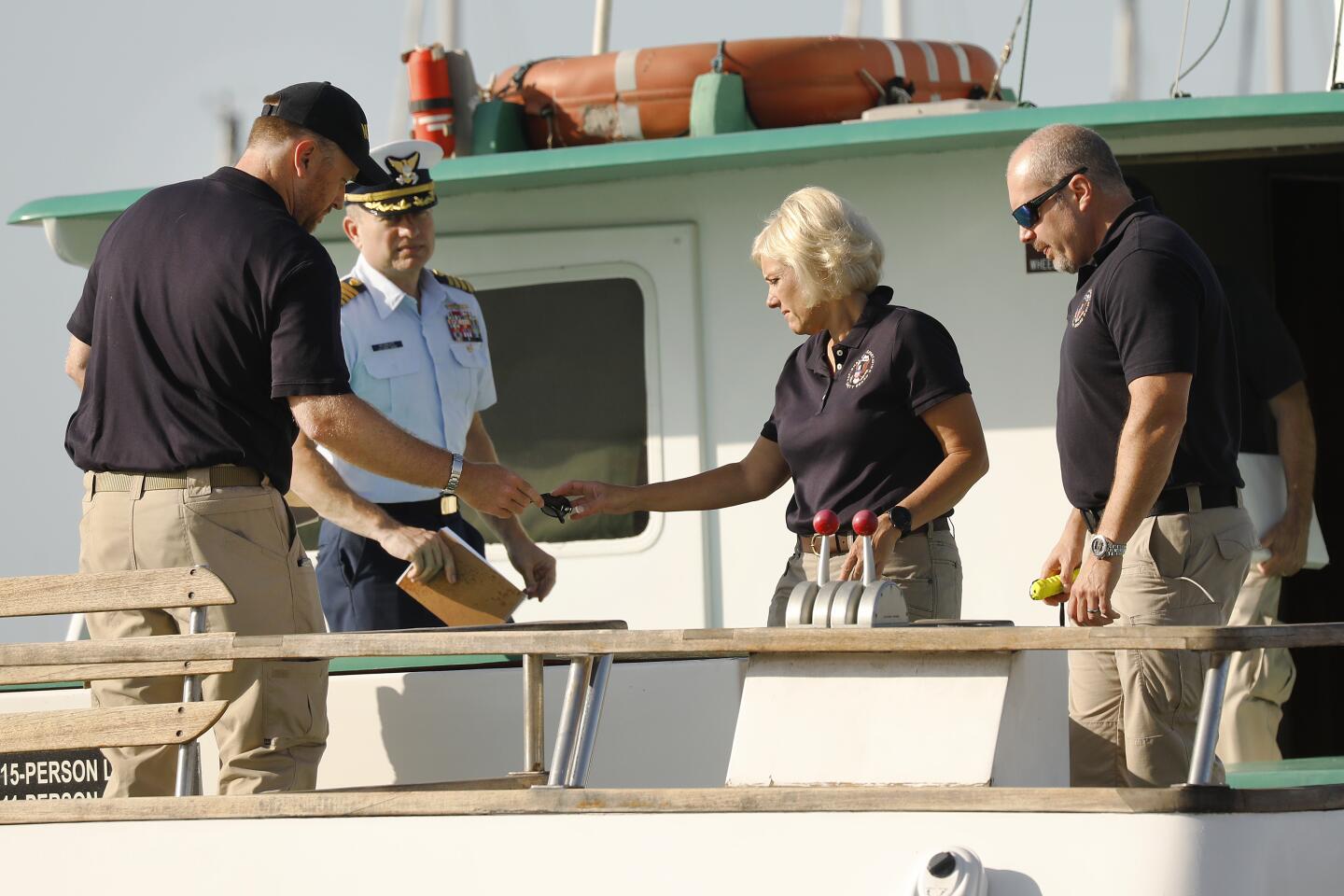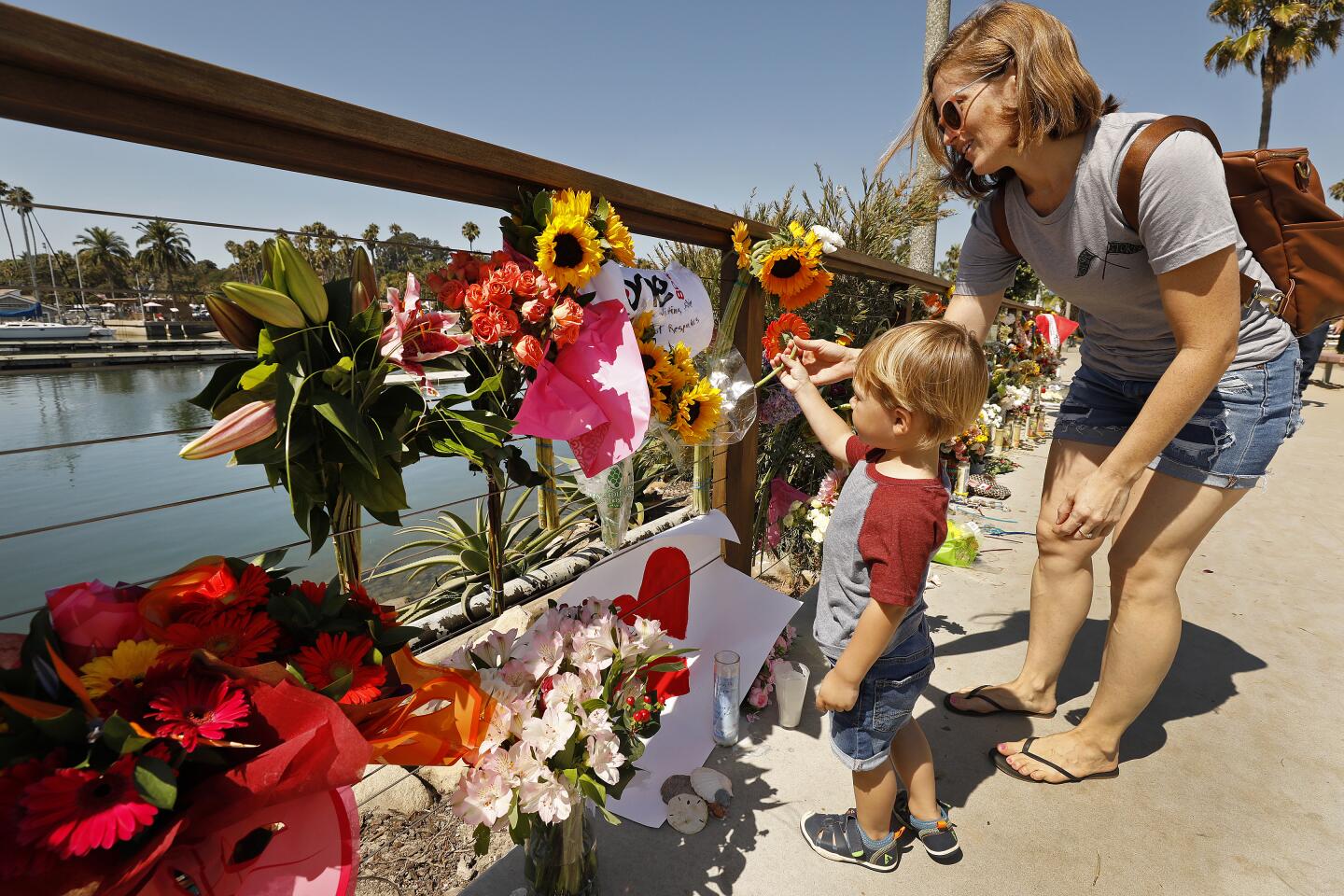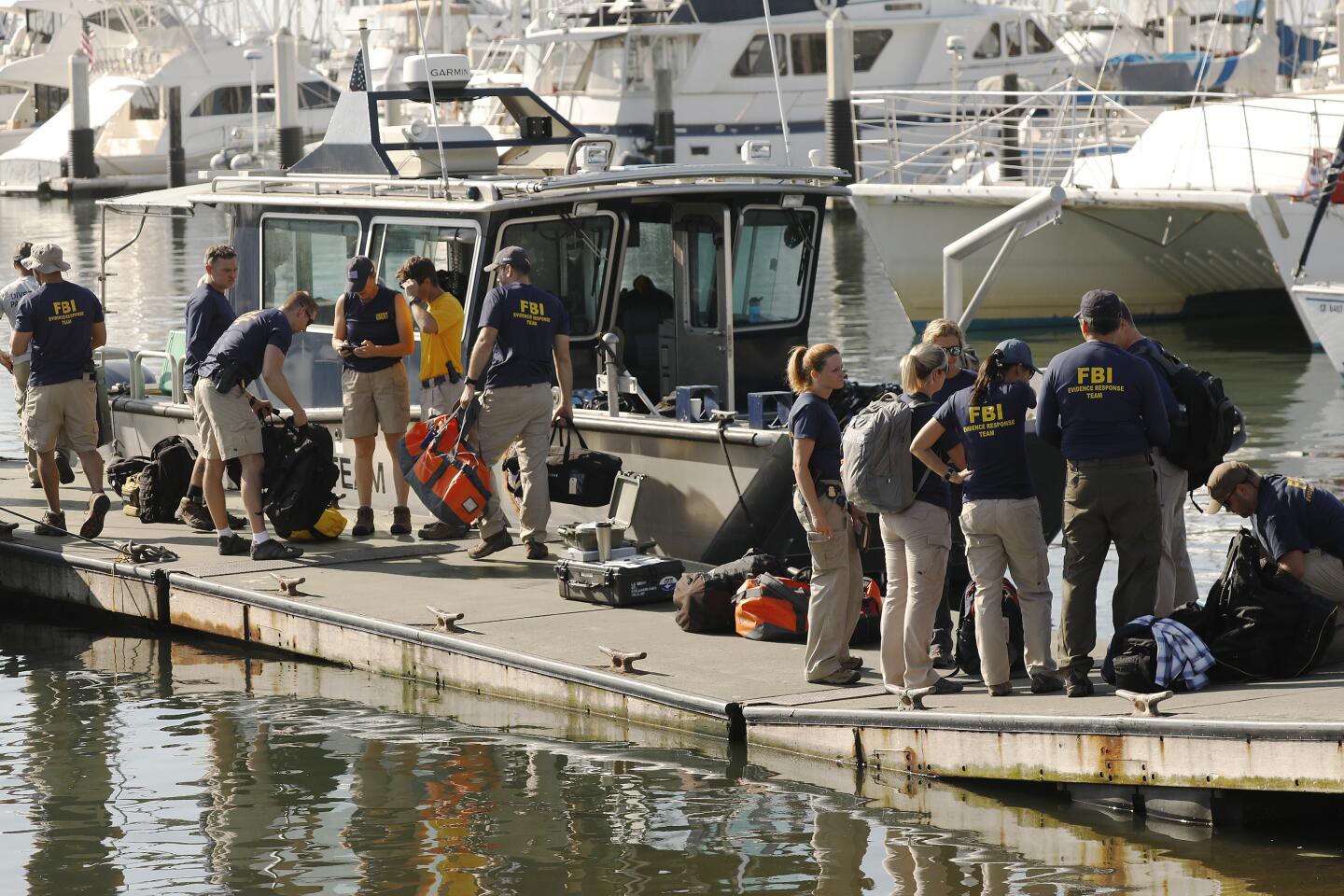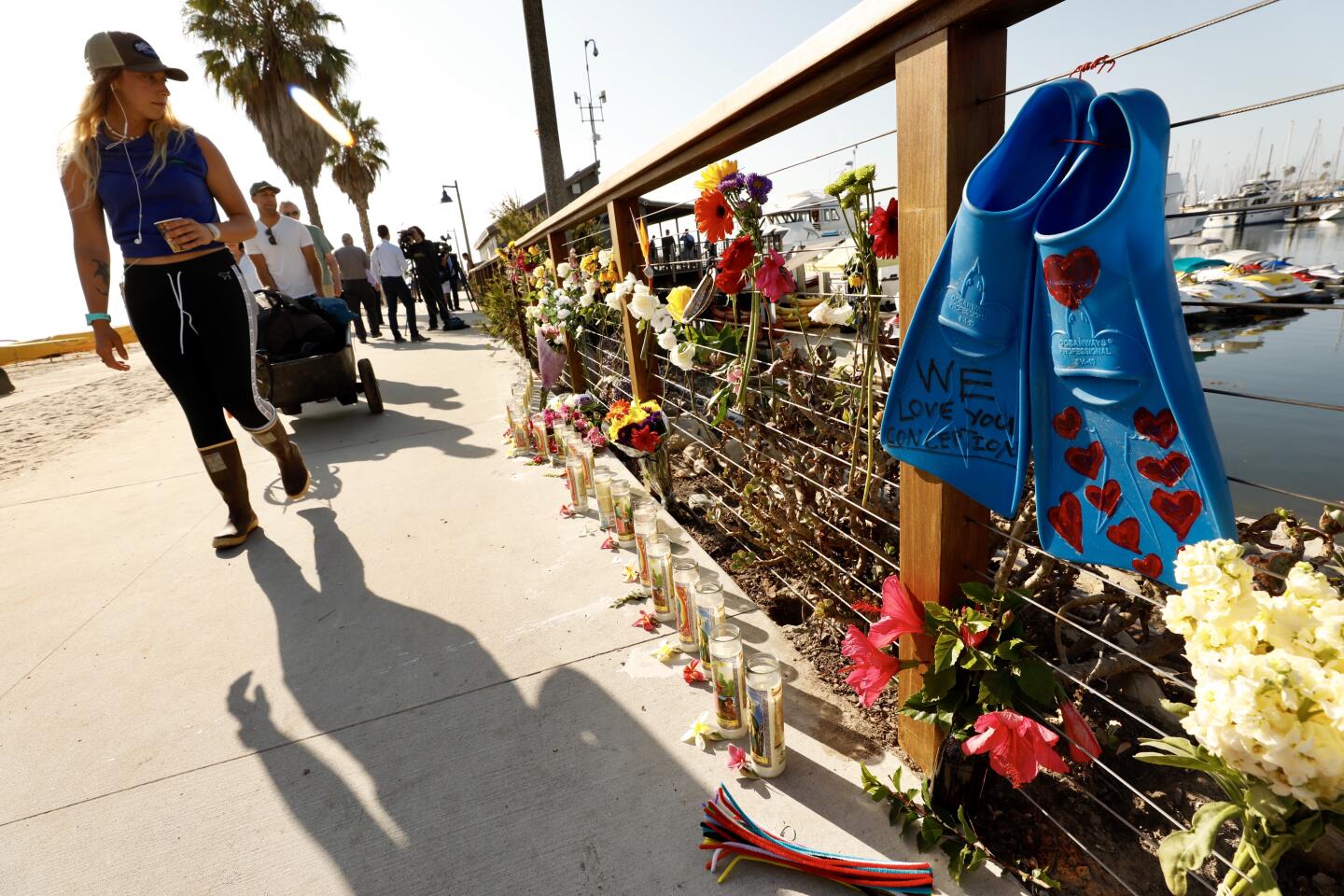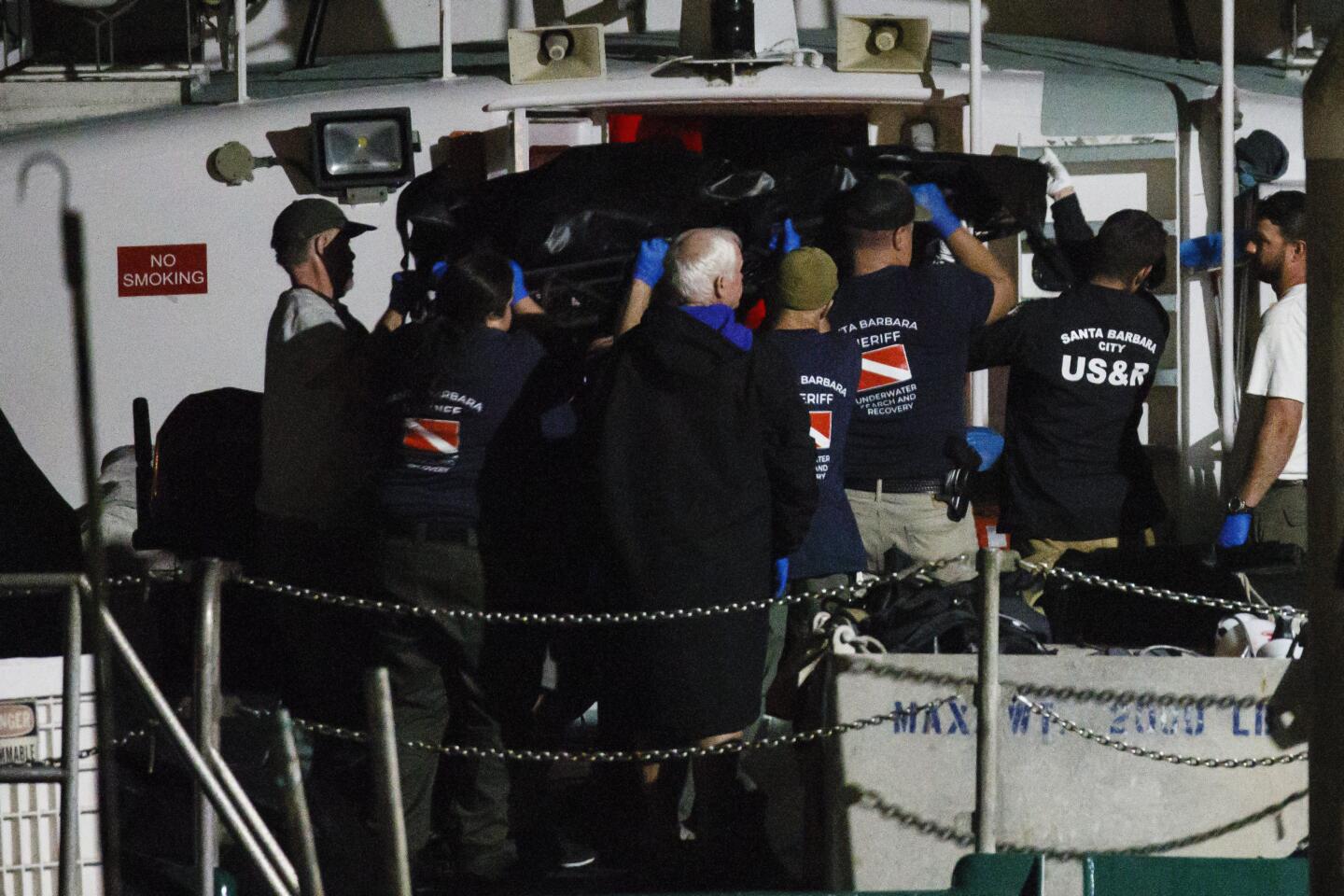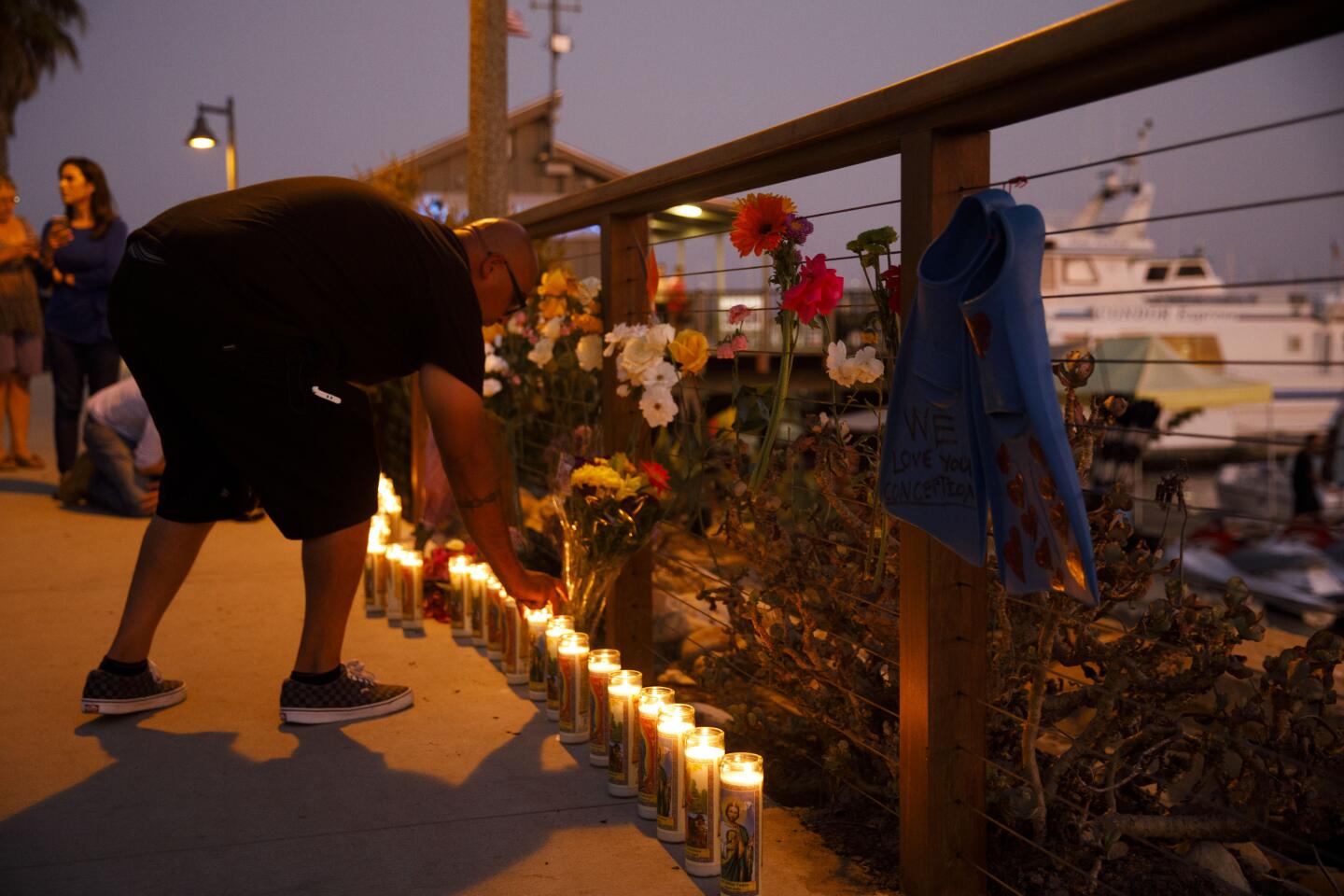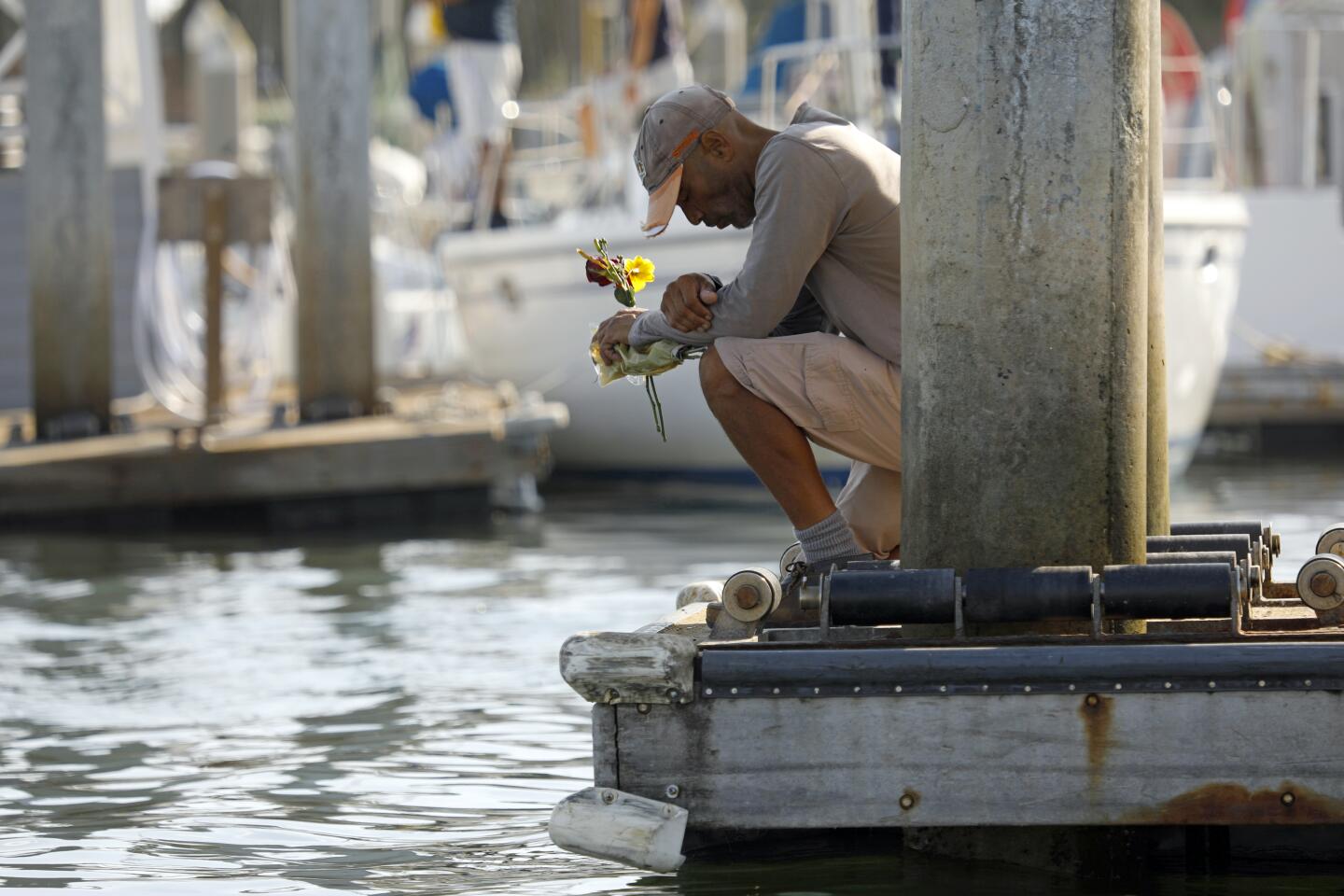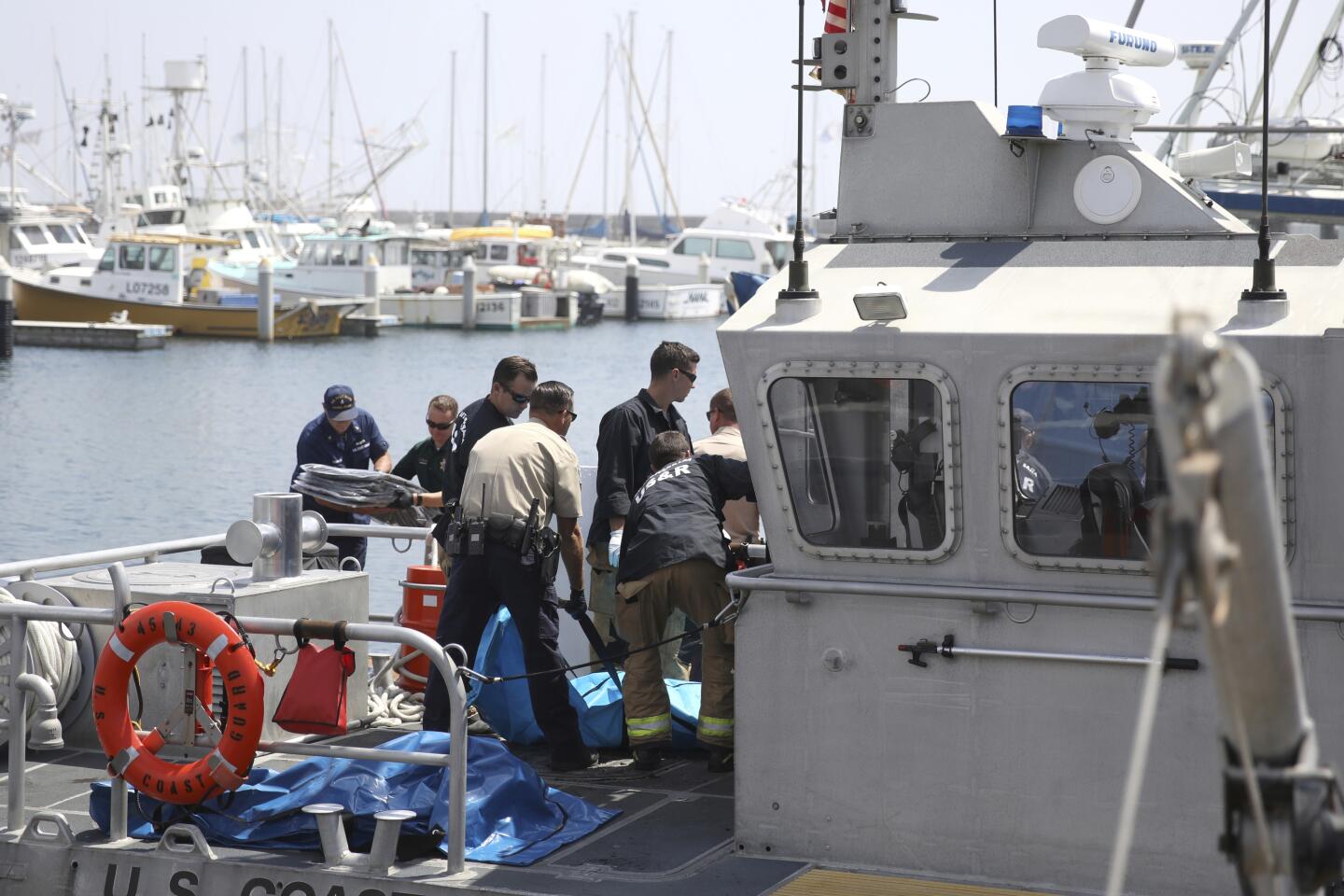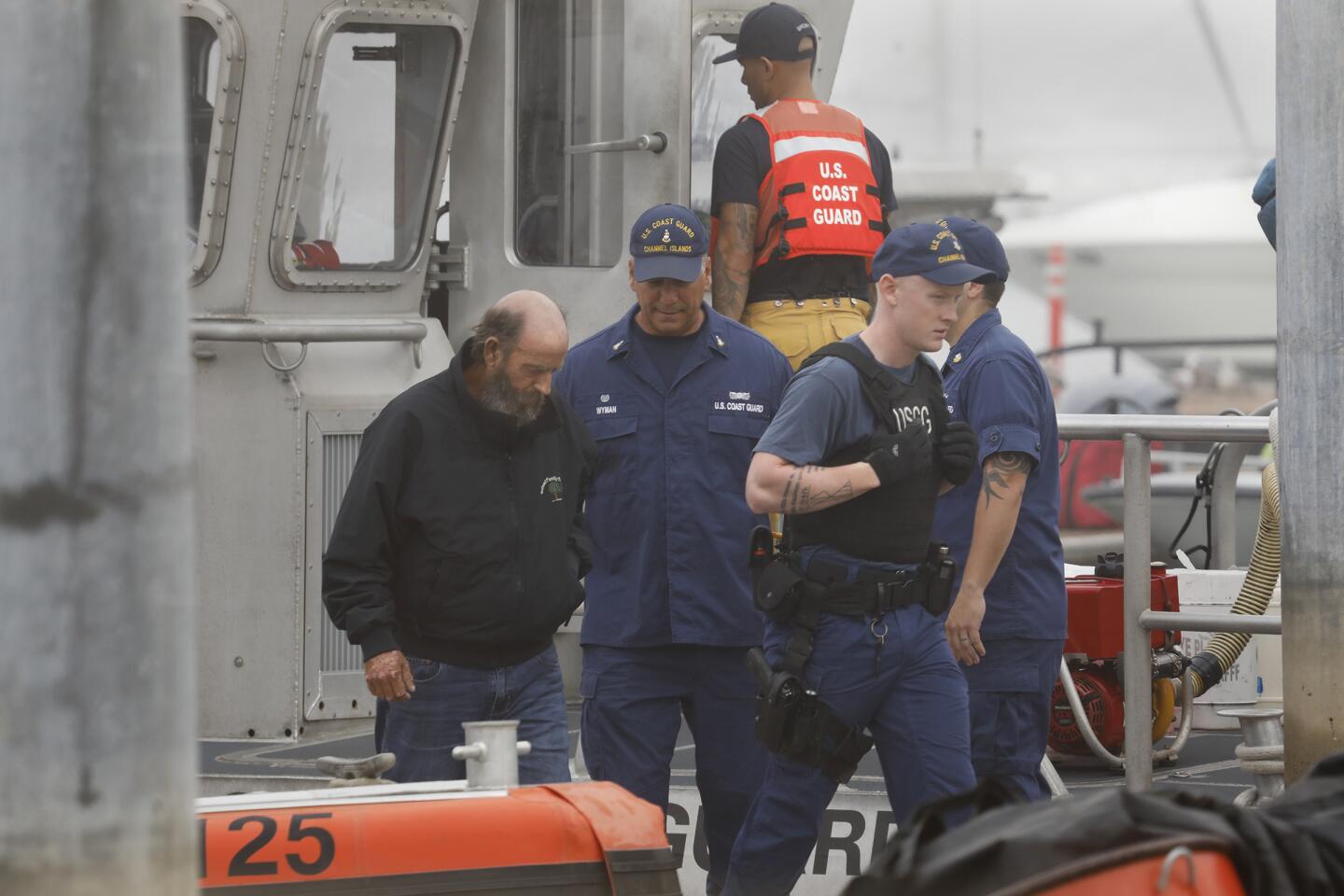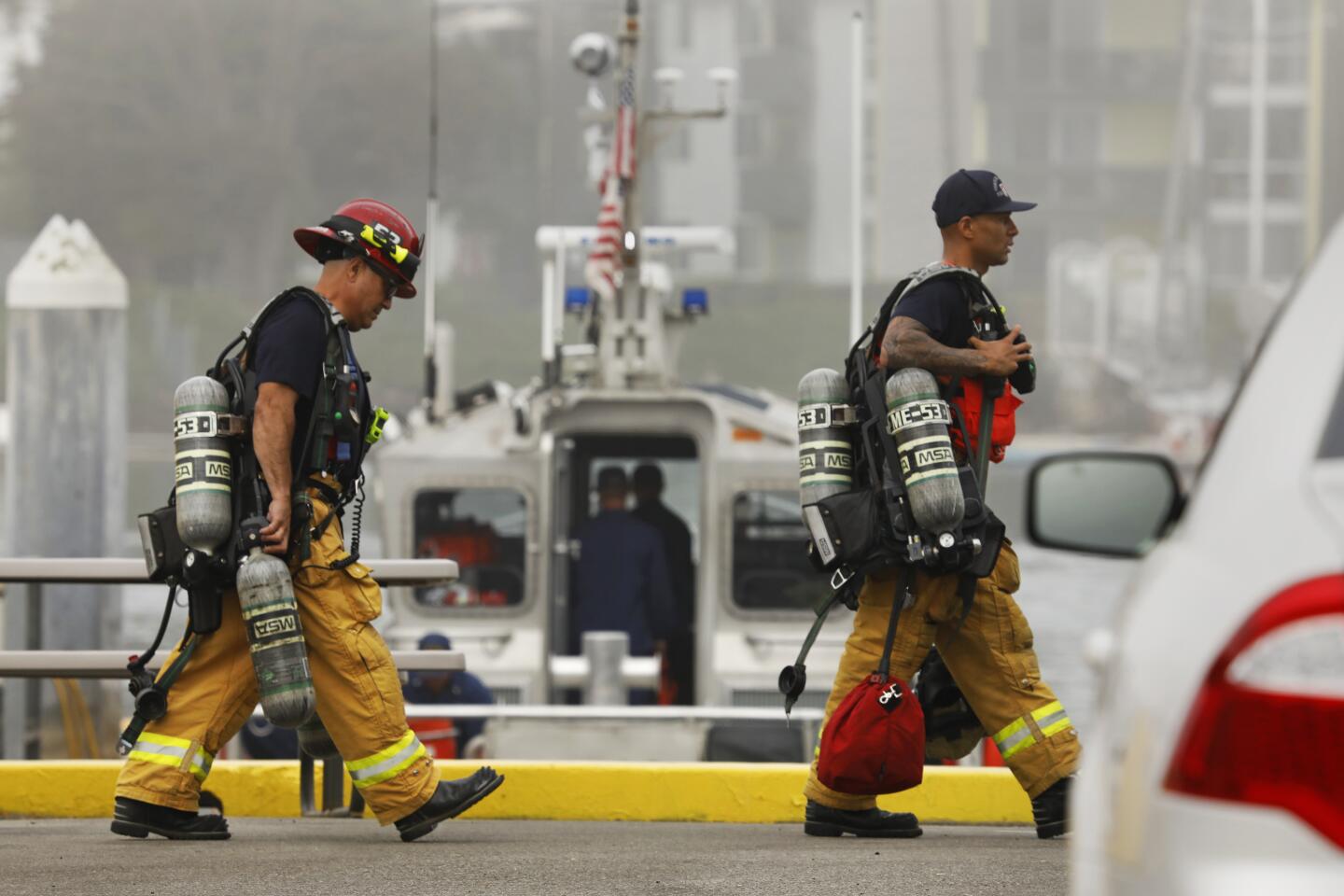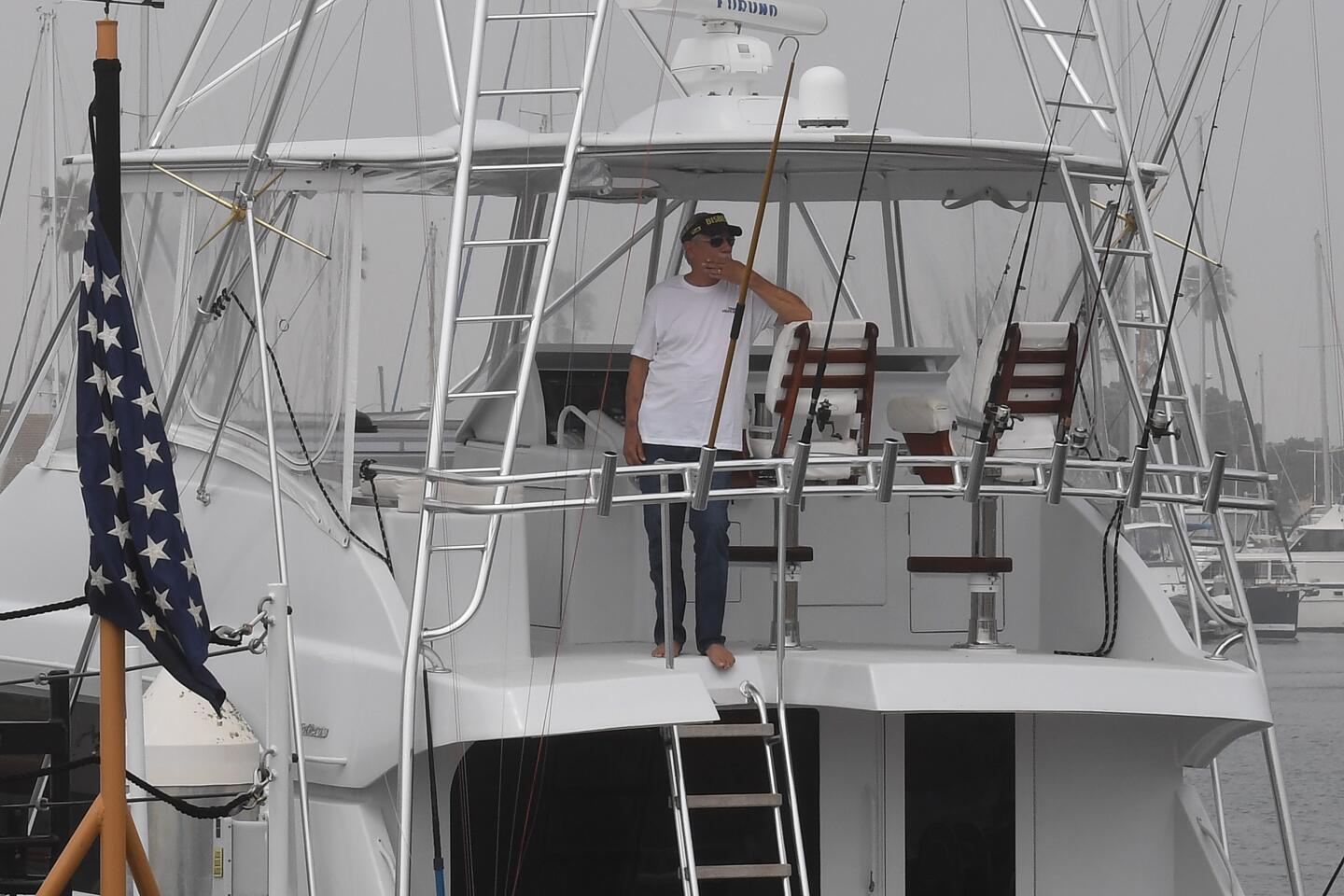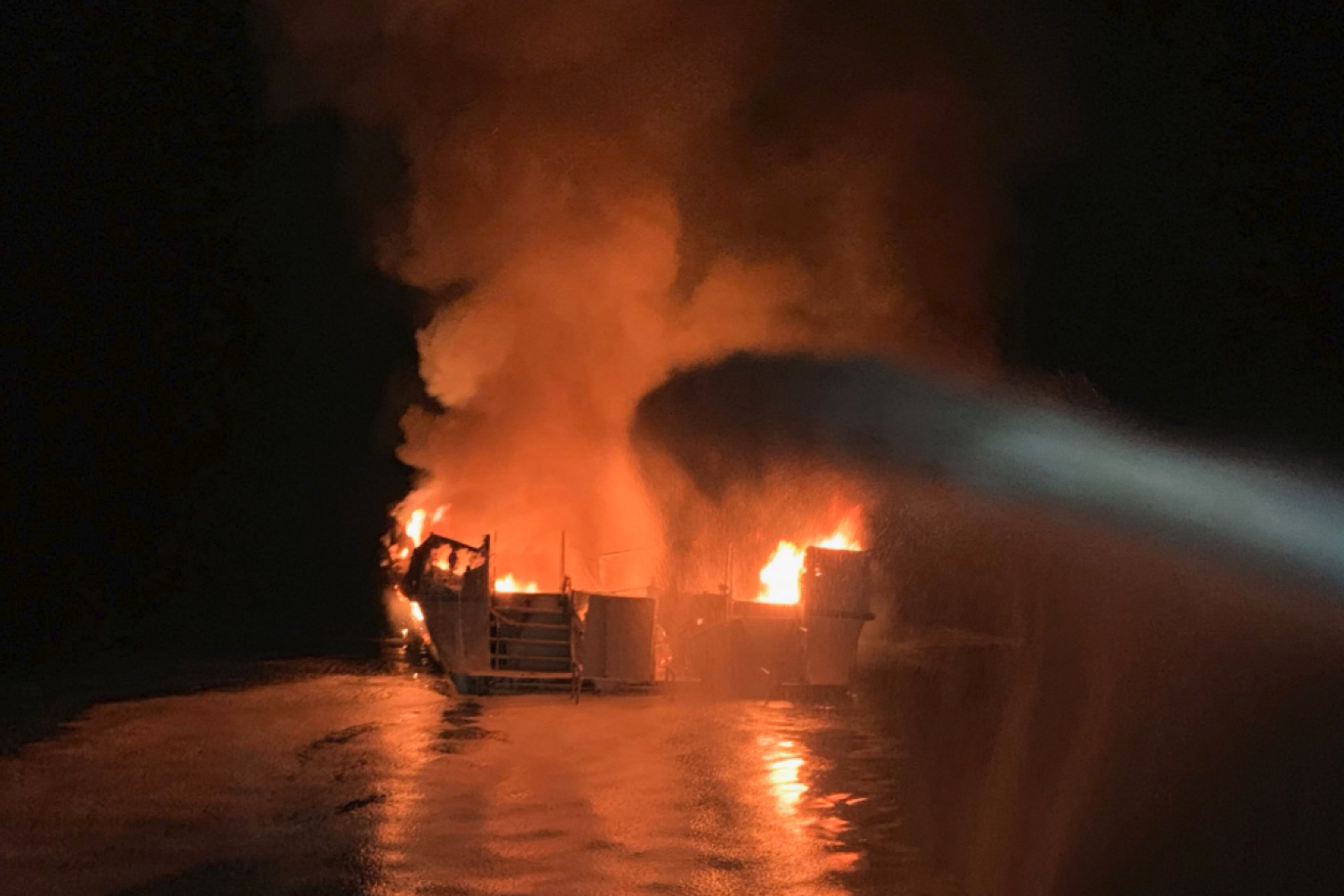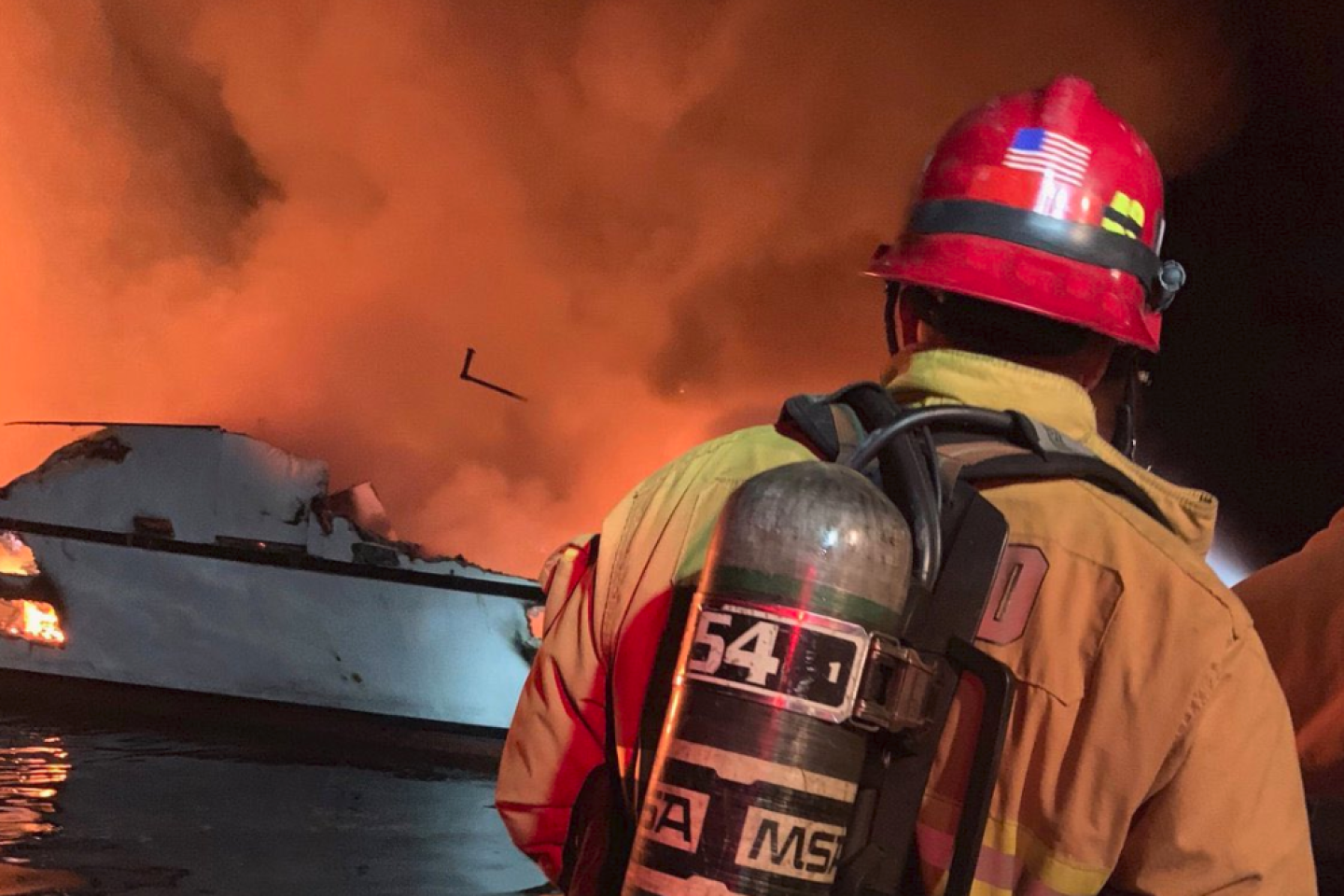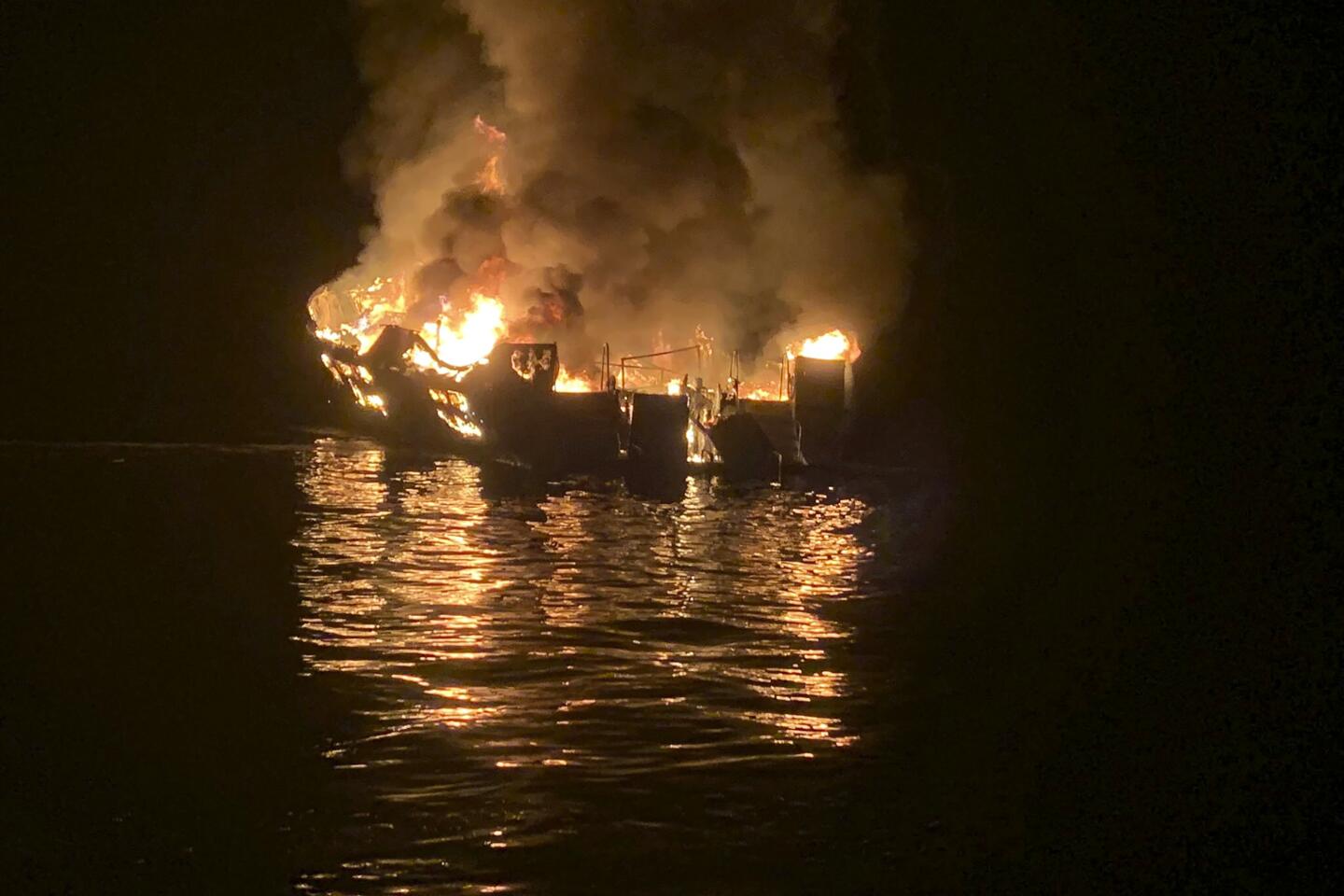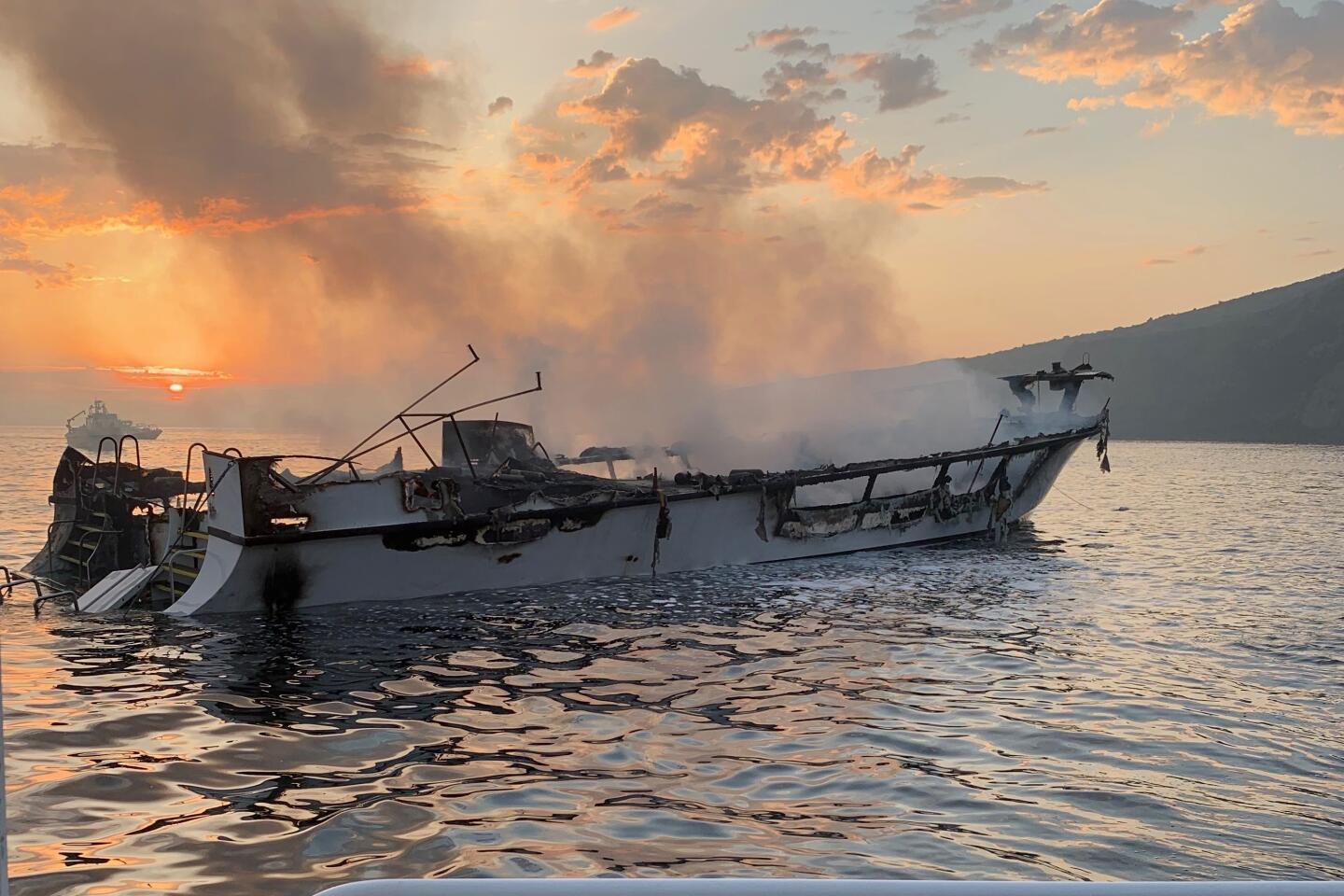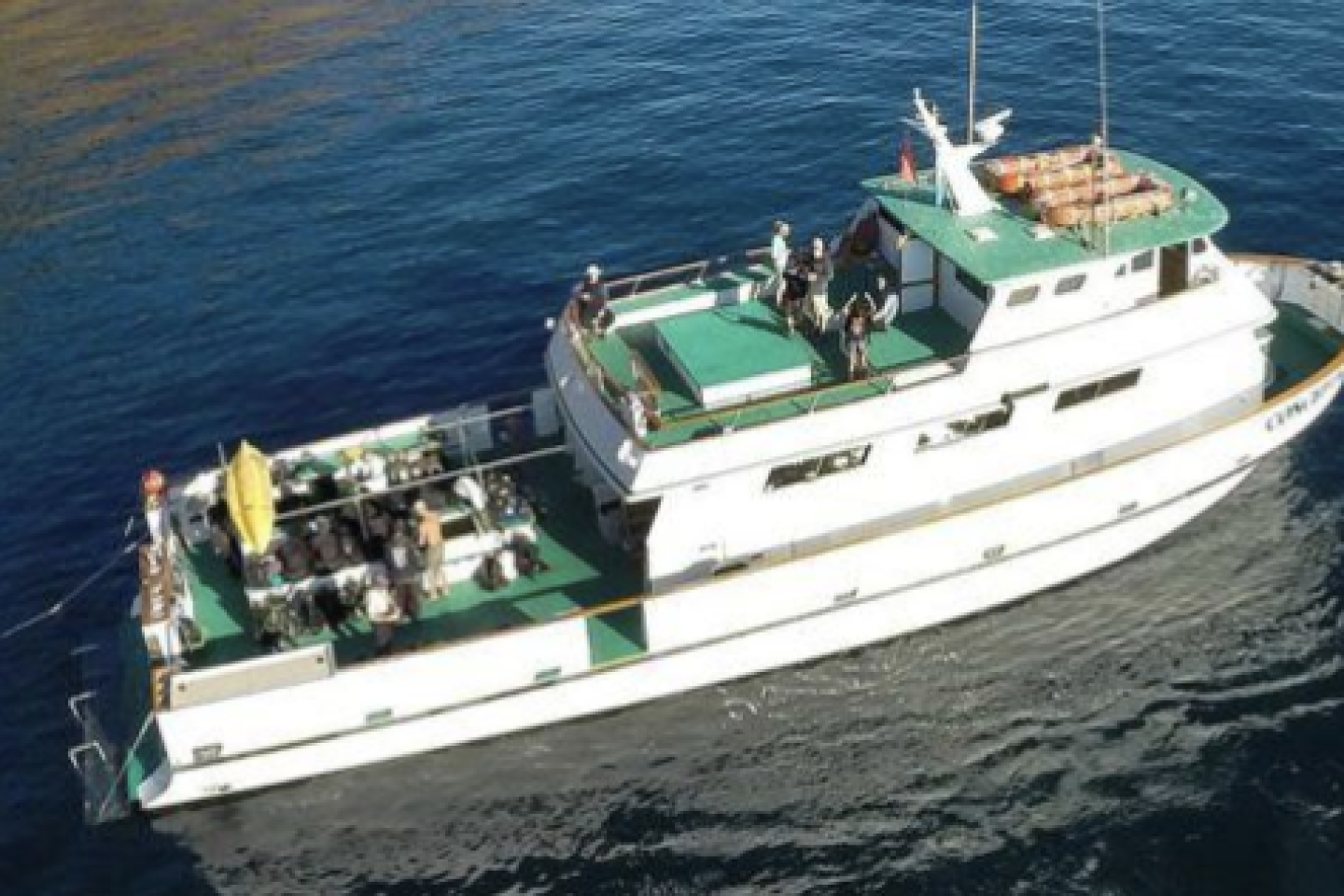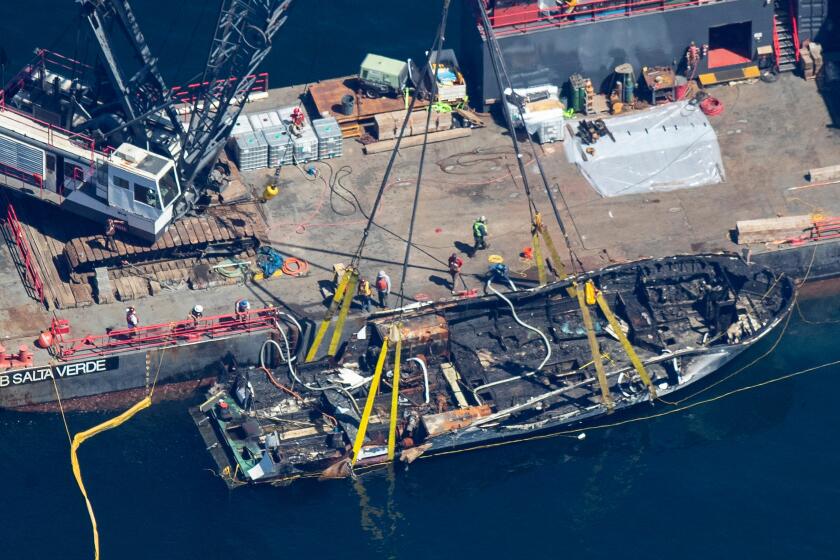Once the fire started, it was too late for many on board the Conception
- Share via
The 75-foot dive boat Conception was considered one of the best of its kind in the region, and both it and its operator, Truth Aquatics Inc., were in compliance with U.S. Coast Guard regulations.
That all changed Monday in the flash of a predawn fire near Santa Cruz Island, when the Conception sank in flames, taking with it more than 30 people who were below deck in bunk beds, apparently unable to get out.
The cause has yet to be determined, but regardless of what sparked and fueled the fire, this much is clear: Once it started, it was too late for most of those on board to safely escape.
“This is probably the worst-case scenario you could possibly have,” Santa Barbara County Sheriff Bill Brown said Monday, noting the boat’s remote location and the time of day — about 3:15 a.m. — when the passengers were probably asleep.
“So you can imagine that of all scenarios: to be in a remote location, have a fire that occurs, have limited, if any, firefighting capabilities that could address that, and then to have all of a sudden a fire that spread very, very rapidly — you couldn’t ask for a worse situation,” he said.
Only the five crew members, who were topside and awake when the fire took hold, managed to escape. At least 15 people were confirmed dead. Some bodies were found inside the ship. Others were recovered outside of it, said Lee Waldron, operations division chief of the Santa Barbara City Fire Department.
The National Transportation Safety board is investigating the accident, along with Santa Barbara County fire and sheriff’s departments.

The Conception was one of three dive boats operated out of Santa Barbara Harbor by Truth Aquatics Inc., owned by Glen Fritzler, who began diving as a 12-year-old and has been with the company since 1979.
Others familiar with the Conception and its operator said they were shocked to learn it was involved in such an accident.
“Truth Aquatics runs one of the best operations, otherwise they wouldn’t be in business,” said Ralph Clevenger, a photographer who regularly shoots pictures for the company and has been on hundreds of its dive trips since the 1990s. “Most of its customers are return customers.”
The wood-hulled Conception was built in Long Beach in 1981, according to Coast Guard records and the company’s website, and was powered by 550-horsepower Detroit Diesel engines, with a total fuel capacity of 1,600 gallons.
The below-deck sleeping area had 20 single bunks and 13 doubles, some stacked three-high, to accommodate up to 46 people.
At the bow end of the bunk room was a curving staircase that led up to the galley area. Toward the stern, an escape hatch was situated above one of the bunks and led to the salon deck, which included the galley.
“It’s on a ceiling of the bunk room or the floor of the galley,” said Bruce Rausch, 69, a veteran dive master in Orange County and a retired San Onofre nuclear engineer who’d been on more than a dozen dive trips aboard the Conception. “All you have to do is get up to a bunk and keep going up and you use the bunk as ladders.”
It is not known if those in the bunk area were cut off from the exits by smoke or flames.
Rausch and others who had been aboard the Conception told The Times that fire extinguishers were accessible to those in the bunk area, which also included smoke alarms designed to trigger emergency lighting when activated.
He and others said that before all dives, the boat’s captain conducted extensive safety briefings covering the use of life jackets and lifeboats, the location of the escape hatch and methods of traversing the staircase.
Clevenger said he had never seen any hint of fire hazards or other safety issues. The escape hatch was easily accessible, he said, covered only by a piece of plywood.
Joe Belanger, a dive photographer who has been on the Conception, also described the accessibility of the escape hatch and stairway in a Facebook post, but noted the perilous conditions that passengers apparently encountered early Monday.
“Finding your way out, though, at 3:30 a.m. when there is no electricity but thick smoke and flames is impossible,” he wrote.
U.S. Coast Guard records document regular inspections of the ship, including in February of this year and August 2018, which did not indicate any violations.
Previous inspections show deficiencies related to fire safety that were promptly corrected, including a 2017 replacement of a fire extinguisher and a 2016 replacement of a heat detector in the galley’s fire detection system. A leaking fire hose was replaced in 2014 and emergency lighting below deck appears to have been installed in 2009, according to the records.
Boat fires often start in engine compartments, where fuel and an ignition source can come together. Other such fires have been traced to electrical sources, such as wiring harnesses or batteries, or to external causes such as fires in marinas or storage facilities.
At least 20 people have been confirmed dead on the dive boat Conception after it caught fire early Monday and sank near Santa Cruz Island.
Although it’s not known what caused the Conception fire, it is likely that pure oxygen was on board. An online agenda of the trip indicates that Nitrox — a blend of pure oxygen and air — was available for divers.
Pure oxygen is not combustible or flammable on its own, but it is a fire’s feed, and can turn a spark into a raging blaze. Because of the inherent danger involved in handling the gas, certification is required to mix and fill scuba tanks holding pure oxygen.
Scuba tank explosions are extremely rare in the United States. In 2011, a St. Petersburg, Fla., man died after a faulty tank exploded, creating a 100-foot-wide debris field.
Scuba tanks are required to be tested every five years by a Department of Transportation-licensed inspector. A stamp on the cylinder shows the most recent inspection date.
Ashley Arnold, owner of Jade Scuba Adventures in Huntington Beach, said the tanks and equipment used by divers using Nitrox or pure oxygen are engineered with particular materials and chemicals designed to suppress accidental fire. And divers and instructors using pure oxygen must have special training.
Electrical cables were identified as the probable cause in a 2013 fire that broke out on a diving vessel in the Gulf of Mexico. The NTSB determined that the metal bands used to install the cables chafed the protective coating, which offered a likely ignition point. Crew tried to douse the flames with portable extinguishers but the fire was ultimately controlled by the ship’s built-in suppression system. None of the 42 people aboard were injured.
In July 2018, a fishing ship off the coast of Alaska caught fire in the early morning. Crew members tried to douse the flames with portable extinguishers but they had to abandon ship and escape to a nearby fishing boat. The NTSB determined the fire probably began in the engine room from an unknown source.
The Conception was also involved in diving accidents that turned deadly. The most recent occurred 2016, when a diver ascended to the surface faster than the rest of his group and became unresponsive while swimming toward the boat. A medical examiner concluded he drowned, with heart disease as a contributing factor.
The boat made headlines in 2005 when it was stolen from Santa Barbara Harbor, allegedly by a 41-year old homeless man who damaged several other boats with it before beaching it at Vandenberg Air Force Base, records show.
More to Read
Sign up for Essential California
The most important California stories and recommendations in your inbox every morning.
You may occasionally receive promotional content from the Los Angeles Times.

